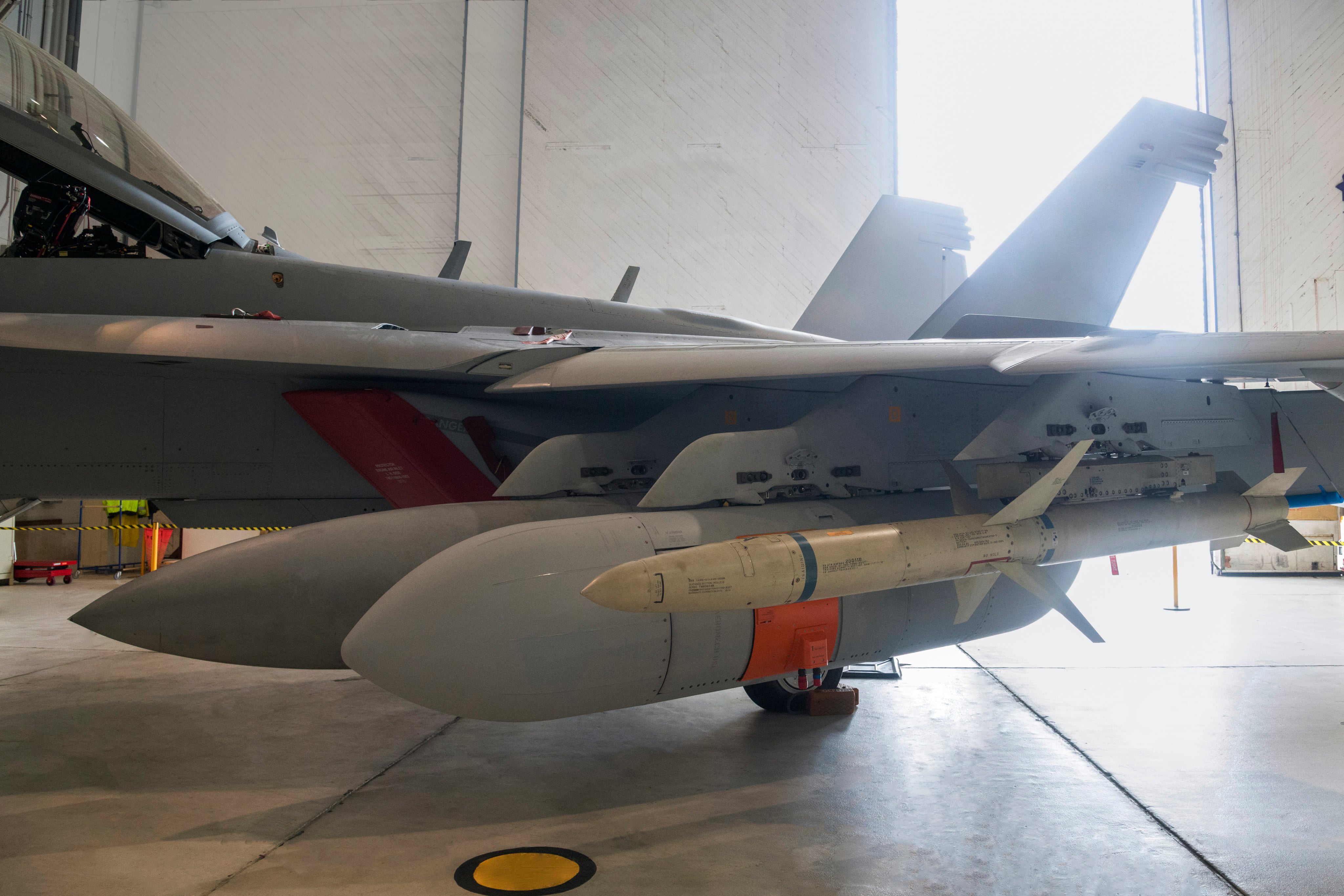WASHINGTON — The U.S. Navy announced the first successful fight test of its new upgraded airborne electronic warfare system.
The Next Generation Jammer Mid-Band pod was mounted and flown on an EA-18G Growler aircraft at Patuxent River, Maryland, on Aug. 7, the Navy said in an Aug. 10 news release.
The jammer is the Navy’s and, by extension, the joint force’s premier aerial electronic attack platform. It will replace the ALQ-99 jamming pod and has been broken up into three pods covering three portions of the electromagnetic spectrum: mid, low and high.
Raytheon was awarded the mid-band pod in 2016. Bids for the low-band pod are currently out with Northrop Grumman and L3 Technologies selected to conduct a demonstration of existing systems. The timeline and funding for a high-band post is unclear at this time.
To date, much of the testing for mid band had been conducted in labs to evaluate the electronics in the pod, but the flight test is a milestone for seeing how the system integrates with the aircraft and the pilot.
RELATED

“There was a lot of discussion on how the NGJ-MB pod would affect how the Growler handles and it was exciting to have the jet feel like any other flight,” said Lt. Jonathan Williams, a VX-23 test pilot. “We have a great test team to thank for making today happen and I look forward to seeing how the Growler team brings out the full potential of the NGJ-MB pod.”
The recent flight test validated “the last four years of development and the extensive efforts of these last several months in preparation,” said Capt. Michael Orr, AEA Systems (PMA-234) program manager.
Government and industry officials have explained how much more powerful and agile the upgraded suite of the next-gen jammer will be.
“The [airborne electronic attack] AEA community has been relying on the ALQ-99 [tactical jamming system] for decades,” said Lt. Jonathon Parry, NGJ-MB Aeromechanical Project Officer. “Gone are the days of isolated Surface-to-Air Missile systems that operate on a small frequency spectrum and do not integrate into a larger Integrated Air Defense System. Modern adversaries are developing complex emitters that use advanced techniques to defeat legacy jamming. NGJ-MB will provide new capabilities to the fleet to ensure spectrum dominance against current and future threats.”
The Senate’s version of the annual defense bill seeks a clearer strategy from the Navy on the jammer and its three pods regarding procurement strategy; analysis of the capability to meet frequency ranges identified in the National Defense Strategy; an assessment of the pod’s compatibility and ability to synchronize non-kinetic effects using other joint electronic warfare platforms; and a future model of interdependent electronic warfare options for tactical, operational and strategic commanders.
This is all in the name of determining how the jammer will help ensure full-spectrum electromagnetic superiority, as Congress in recent years has taken aim at the Defense Department’s capabilities and potential deficiencies in the electromagnetic spectrum versus top competitors.
Mark Pomerleau is a reporter for C4ISRNET, covering information warfare and cyberspace.








